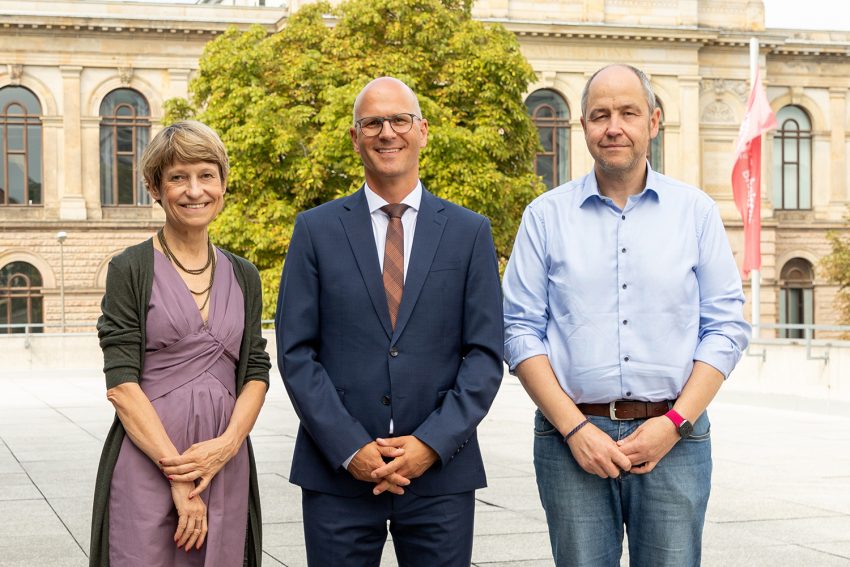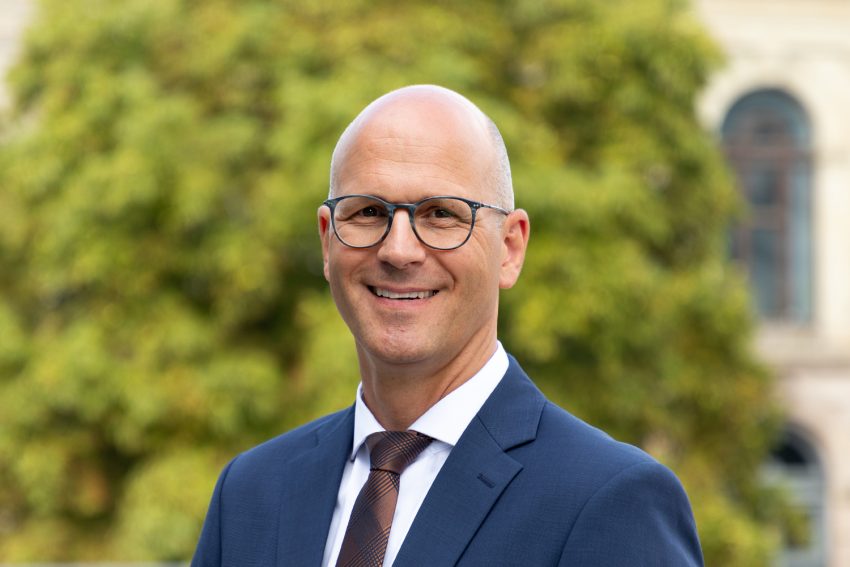“The close cooperation between DLR and TU offers great potential” Professor Kai Richter researches aerodynamics in aviation and space travel
Professor Kai Richter was appointed to TU Braunschweig in a joint appointment with DLR in September 2024. He teaches and conducts research at the Institute of Fluid Mechanics. He also heads the Institute of Aerodynamics and Flow Technology at the DLR site in Braunschweig. He aims to use modern technologies to advance climate-friendly aerospace, relying on simulations, wind tunnels and artificial intelligence.

TU President Angela Ittel with Prof. Kai Richter (centre) and Prof. Markus Böl, Dean of the Faculty of Mechanical Engineering. Photo credits: Kristina Rottig/TU Braunschweig
Why did you choose TU Braunschweig?
TU Braunschweig is one of Germany’s leading universities in the field of mechanical engineering and one of the few to offer a Master’s degree in aerospace engineering. In this way, TU Braunschweig trains the engineers who will shape the aerospace industry of tomorrow. My field, aerodynamics, is of great importance for aircraft, helicopters and spacecraft and is therefore an important part of aerospace engineering. I have been appointed both Professor of Aerodynamics and Director of the Institute of Aerodynamics and Flow Technology at the German Aerospace Centre (DLR) in Braunschweig. The close cooperation between DLR and TU offers great potential for both sides.
How would you explain your work to someone unfamiliar with it?
I study the influence of aerodynamics on aircraft and spacecraft and how aircraft, helicopters and rocket systems can be made much more environmentally friendly in the future. Aerodynamics describes the way in which the air flowing around an aircraft, for example, generates forces and keeps the aircraft in the air. We often don’t think of aerodynamics as having a direct impact on our daily lives. But it is shaping the way we will move in an increasingly connected world – as energy-efficiently, as environmentally friendly and as quietly as possible.
In aviation, for example, aerodynamics will help make carbon-neutral flying a reality: with optimal airflow control, an aircraft can use much less fuel and be much quieter. Perfectly shaped aerodynamic wings help save weight and minimise turbulence, which can significantly reduce CO2 emissions.
What research topics and projects will you be working on at TU Braunschweig and DLR?
One important focus is the development of advanced aerodynamic technologies that will make future aircraft and spacecraft quieter and more energy efficient. For example, we are researching aerodynamically highly efficient aircraft wings, methods for active control of airflow, aircraft concepts with new types of propulsion for alternative energy sources, and reusable rocket systems.
On the other hand, the development of ground-breaking multidisciplinary simulation and design methods, and the use of artificial intelligence, are also of particular importance. High-performance simulation software that can accurately predict flight behaviour in all phases on supercomputers is the basis for the future digital development of all flying vehicles.
What motivated you to do research in this field?
I first came into contact with aerodynamics during my mechanical engineering studies at RWTH Aachen University and realised how incredibly diverse, exciting and, above all, forward-looking this subject is. From that moment on, I was hooked. I then delved deeper into the subject as a PhD student and research assistant, completing my doctorate on the influence of mini-flaps to improve the aerodynamics of aircraft wings. I have been working at the DLR Institute of Aerodynamics and Flow Technology since my student days. First as a PhD student in the field of transonic aerodynamics of commercial aircraft at the Göttingen site, then as a project and group leader in the field of helicopter rotor flow. In 2016, I took over as head of the High Speed Configurations department there. It is a great honour for me to be able to continue my research in aerodynamics with the students at TU and the staff at the DLR site in Braunschweig, and I am very happy to have been given this opportunity.
How would you describe your typical working day in three words?
Coordinating research, leading teams, shaping the future.

